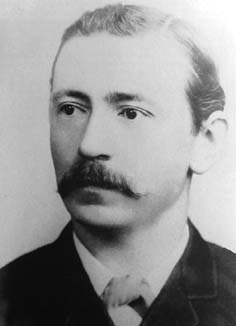


 تاريخ الرياضيات
تاريخ الرياضيات
 الرياضيات في الحضارات المختلفة
الرياضيات في الحضارات المختلفة 
 الرياضيات المتقطعة
الرياضيات المتقطعة
 الجبر
الجبر
 الهندسة
الهندسة 
 المعادلات التفاضلية و التكاملية
المعادلات التفاضلية و التكاملية 
 التحليل
التحليل
 علماء الرياضيات
علماء الرياضيات |
Read More
Date: 25-2-2017
Date: 26-2-2017
Date: 18-2-2017
|
Died: 2 June 1942 in London, England

Andrew Forsyth's father was John Forsyth and his mother was Christina Glenn. John Forsyth was an engineer working in the Glasgow shipyards and his family came from Paisley. However John Forsyth moved to Liverpool and, taking his family with him, Andrew was soon to show his exceptional mathematical abilities at secondary school in that city.
Forsyth entered Trinity College, University of Cambridge in 1877 and there he studied under Cayley, graduating in 1881. Taking the Mathematical Tripos in that year he was First Wrangler (meaning that he was placed first in the ranked list of first class graduates) and he was appointed to a fellowship at Trinity College. This type of fellowship was competitive and candidates had to submit a thesis; Forsyth's thesis proved deep results on double theta functions. His remarkable talent saw him leave Cambridge in the following year when he was appointed to the chair of mathematics at the University of Liverpool at the remarkably young age of 24.
Although Forsyth was back in Liverpool, the city which had become his home, he did not remain there for very long, accepting a lectureship at Cambridge in 1884. Two years later, at the age of 28, he was elected a Fellow of the Royal Society of London. In 1897 he was awarded the Royal Medal by that Society.
In 1893 he published Theory of functions of a complex variable which had such an impact at Cambridge that function theory dominated there for many years. Whittaker writes in [6] that this text:-
... had a greater influence on British mathematics than any work since Newton's Principia.
However the reputation of the book outside Britain was not high. In fact this is not surprising since the whole thrust of the book was to bring the great advances of Continental mathematics to Cambridge which Forsyth rightly saw as living in the past. He was well equipped to undertake this task for he travelled widely and, being a good linguist, was able to appreciate the advances made by authors writing in French and German.
On Cayley's death Forsyth was appointed to his chair in 1895 becoming the Sadleirian professor of Pure Mathematics. However his preference for technical mastery rather than rigorous analysis meant that he failed to inspire future pure mathematicians. In fact one would have to say that Forsyth was unlucky, for although he saw the importance of Continental mathematics, at the same time his greatest strengths lay in his ability to handle complex formulae. He therefore excelled at precisely the style of mathematics which he himself campaigned successfully to replace at Cambridge.
He had a love affair with Marion Amelia Boys, the wife of C V Boys, and the scandal of 1910 forced him to resign his chair at Cambridge. After marrying Marion Boys, he left the country for a while spending some time in Calcutta before he eventually found another post in England, being appointed to the chair in Imperial College London in 1913. He retired from his chair in London in 1923 when reaching the age of sixty-five but continued to publish mathematical texts until he was close to eighty years of age.
Famous texts which Forsyth published before his 1893 work Theory of Functions of a complex variable , are A treatise on differential equations (1885), and Theory of differential equations published in six volumes between 1890 and 1906. After his 1893 treatise he published many other texts, the most important of which are Lectures on the differential geometry of curves and surfaces (1912), Lectures introductory to the theory of functions of two complex variables (1914), Calculus of variations (1927), Geometry of four dimensions which was in two volumes and published in 1930, and Intrinsic geometry of ideal space also in two volumes, published in 1935.
In [2] it is noted that:-
All his treatises were marked by perfect form and devastating completeness. He also had humour of a specialized kind, even to the point of joviality. As a teacher he was sympathetic and always ready with vast store of information.
Articles:



|
|
|
|
علامات بسيطة في جسدك قد تنذر بمرض "قاتل"
|
|
|
|
|
|
|
أول صور ثلاثية الأبعاد للغدة الزعترية البشرية
|
|
|
|
|
|
|
مدرسة دار العلم.. صرح علميّ متميز في كربلاء لنشر علوم أهل البيت (عليهم السلام)
|
|
|